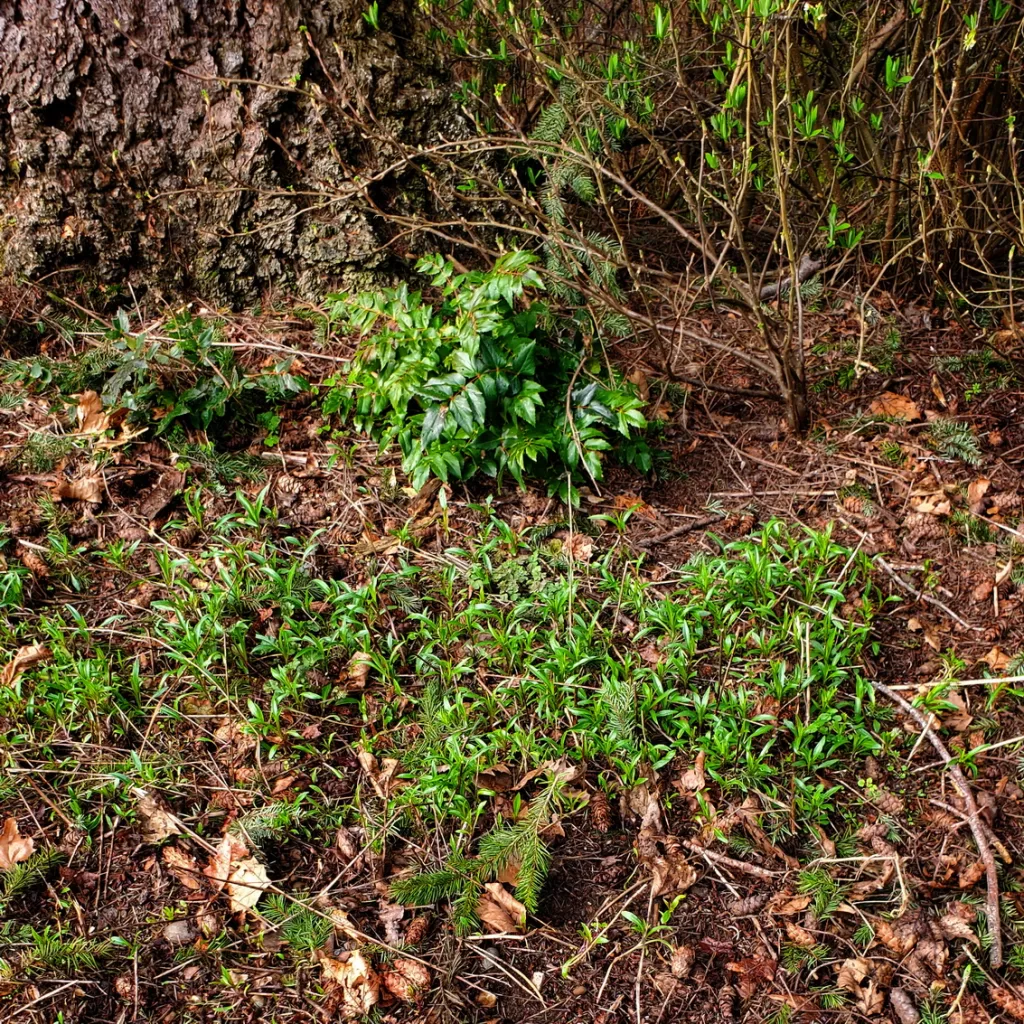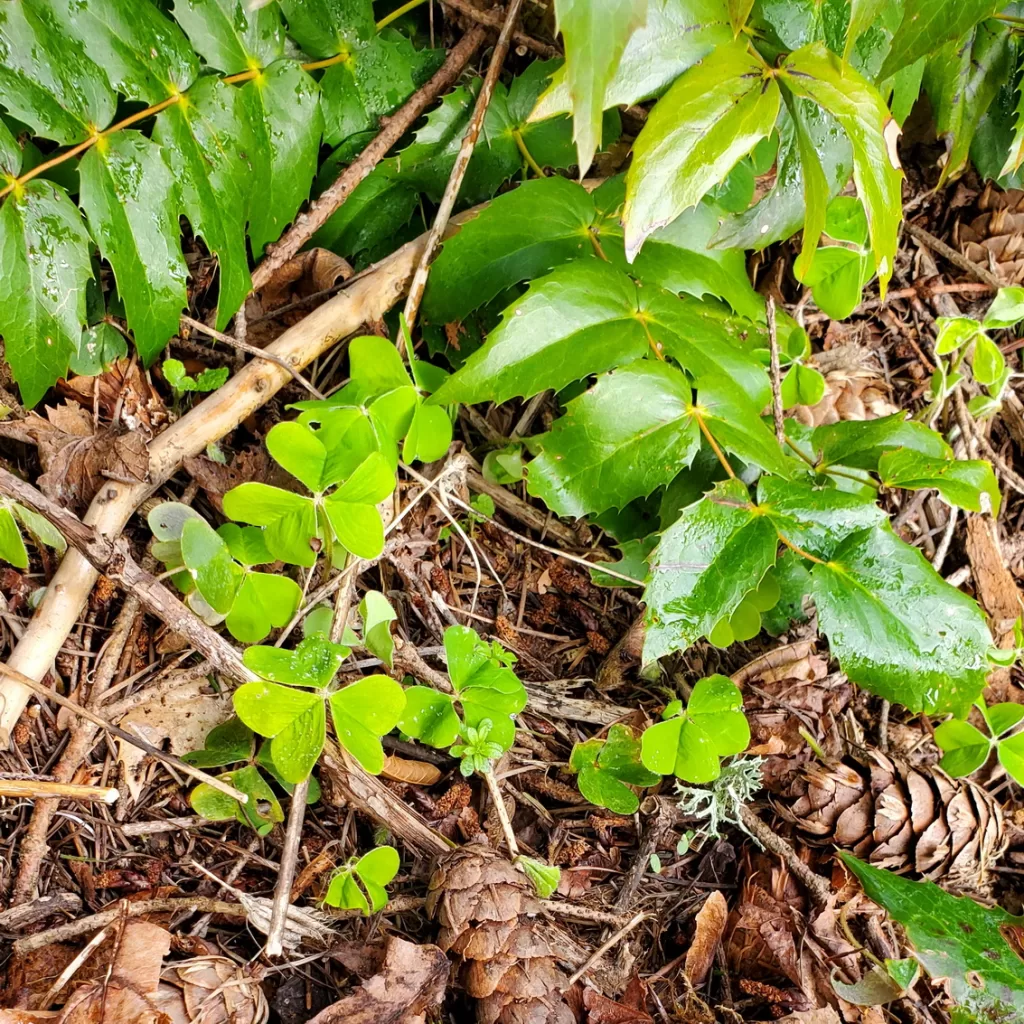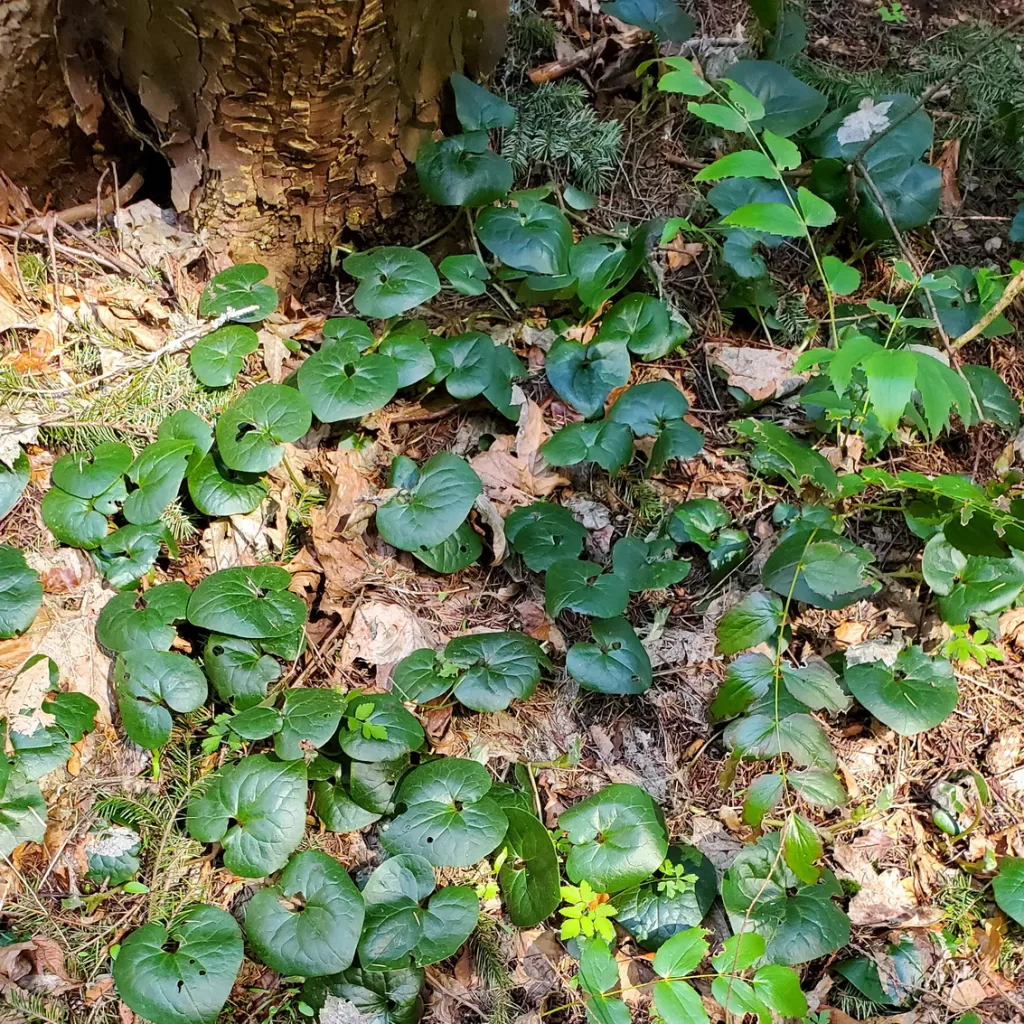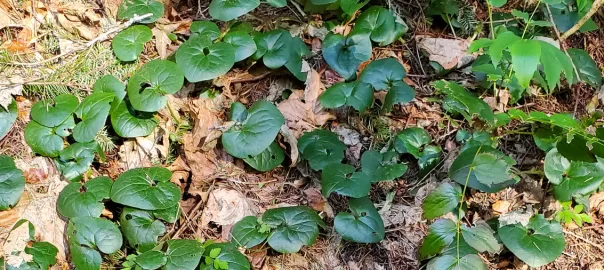Ideally, backyard forest restoration results in “working ourselves out of our jobs,” or at least significantly reducing our annual maintenance needs. Establishing robust native groundcovers helps achieve this by deterring unwanted plants. Native groundcovers may regenerate naturally over time, but we can assist by installing plants in gaps. Though we can get most of these by dividing existing plants and transplanting “rescue plants,” some may have to be purchased.
The Essential Trio — Sword Fern, Salal, and Oregon Grape
Sword Fern is easy to divide, but I’ve had no success dividing or transplanting Salal or Oregon Grape. It’s hard to spend most of a limited budget on just these two plants, but in the long run they will make up for their slow growth by providing the most effective ground cover for Puget Lowland forests.
While waiting for the essential trio to become established, I like to use some of my budget on other plants which are either new to my restoration areas or should be purchased initially to ensure they are native species. These include Asters, Wood-Sorrels, Hedge Nettles, and Alumroots, all of which can have naturalized populations of non-native species in our urban forests.
Douglas Aster (Symphyotrichum Subspicatum)
A few years ago, I cleared the Ivy along a partially shaded forest edge and planted several Douglas Asters that I purchased from Go Natives Nursery. They soon dominated the spot and would now be difficult to eradicate. Since there are several non-native Symphyotrichum species naturalized in the Puget Lowlands, I’m glad I started with a reputably-sourced subspicatum.

Redwood Sorrel (Oxalis Oregana)
Colonies of Wood-Sorrels are fairly common in our existing forests, and it can be tempting to harvest a few to transplant. However, we have a lot of the non-native, semi-invasive Creeping Yellow Sorrel (Oxalis corniculata), described by Jacobson as “a little pest” that is “almost impossible to get rid of.” Because petal color is key to separating Oxalis species, and because blossoms can be scarce on plants growing in full shade, I recommend starting with a reputably-sourced Oxalis oregana.

Plants We Can Safely Divide or Rescue
I’ve already written about Sword Fern, Fringecup, and Large-Leaved Avens, and I believe any plants in the Asarum, Maianthemum, and Tolmiea genera are also safe to rescue and divide. I’ve been delightfully surprised to find thriving patches of Wild Ginger (Asarum caudatum) that grew from individual plants we scattered about the forest floor a decade ago and forgot. How rewarding, to discover that many have thrived and now carpet multiple square feet of forest. Though I haven’t tried dividing them yet, Tony Avent makes it look easy.

